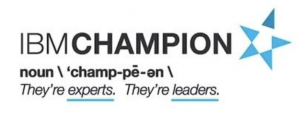The disk space on my mac is too short since i start to use docker. Using the management tools i found the file Docker.qcow2 with the size of 41,5 GB.
Searching for a solution i found the following:
” Docker For Mac uses a file called Docker.qcow2 that takes more and more disk space as time passes. Deleting images or containers does not decrease the size of this file.”
The script bellow do the job an keep your selected images.
#!/bin/bash
# Copyright 2017 Théo Chamley
# Permission is hereby granted, free of charge, to any person obtaining a copy of
# this software and associated documentation files (the "Software"), to deal in the Software
# without restriction, including without limitation the rights to use, copy, modify, merge,
# publish, distribute, sublicense, and/or sell copies of the Software, and to permit persons
# to whom the Software is furnished to do so, subject to the following conditions:
#
# The above copyright notice and this permission notice shall be included in all copies or
# substantial portions of the Software.
#
# THE SOFTWARE IS PROVIDED "AS IS", WITHOUT WARRANTY OF ANY KIND, EXPRESS OR IMPLIED, INCLUDING
# BUT NOT LIMITED TO THE WARRANTIES OF MERCHANTABILITY, FITNESS FOR A PARTICULAR PURPOSE AND
# NONINFRINGEMENT. IN NO EVENT SHALL THE AUTHORS OR COPYRIGHT HOLDERS BE LIABLE FOR ANY CLAIM,
# DAMAGES OR OTHER LIABILITY, WHETHER IN AN ACTION OF CONTRACT, TORT OR OTHERWISE, ARISING FROM,
IMAGES=$@
echo "This will remove all your current containers and images except for:"
echo ${IMAGES}
read -p "Are you sure? [yes/NO] " -n 1 -r
echo # (optional) move to a new line
if [[ ! $REPLY =~ ^[Yy]$ ]]
then
exit 1
fi
TMP_DIR=$(mktemp -d)
pushd $TMP_DIR >/dev/null
open -a Docker
echo "=> Saving the specified images"
for image in ${IMAGES}; do
echo "==> Saving ${image}"
tar=$(echo -n ${image} | base64)
docker save -o ${tar}.tar ${image}
echo "==> Done."
done
echo "=> Cleaning up"
echo -n "==> Quiting Docker"
osascript -e 'quit app "Docker"'
while docker info >/dev/null 2>&1; do
echo -n "."
sleep 1
done;
echo ""
echo "==> Removing Docker.qcow2 file"
rm ~/Library/Containers/com.docker.docker/Data/com.docker.driver.amd64-linux/Docker.qcow2
echo "==> Launching Docker"
open -a Docker
echo -n "==> Waiting for Docker to start"
until docker info >/dev/null 2>&1; do
echo -n "."
sleep 1
done;
echo ""
echo "=> Done."
echo "=> Loading saved images"
for image in ${IMAGES}; do
echo "==> Loading ${image}"
tar=$(echo -n ${image} | base64)
docker load -q -i ${tar}.tar || exit 1
echo "==> Done."
done
popd >/dev/null
rm -r ${TMP_DIR}
Usage : <ScriptName>.sh <image1> <image2>
Sample : ./CleanDocker.sh websphere-liberty ibmcom/db2express-c
The original post on this link: https://blog.mrtrustor.net/post/clean-docker-for-mac/
